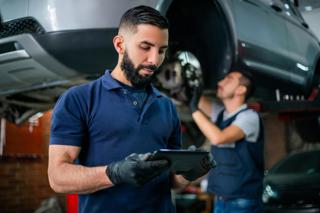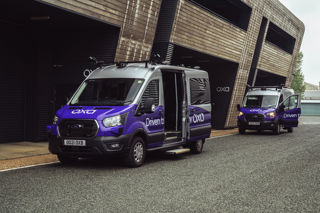ACIS’s chief executive Graham O’Neill has urged bodyshops to optimise the safety and earning potential of ADAS when autonomous vehicles come in for repair.
The technology is complex with cameras controlling everything from braking, cruise control, lane departure and correction, collision avoidance, auto-parking and proximity monitors, to mention just a few current standard fitments.
The complexity means the repair requires specialisation and understanding that damaged bumpers and windscreens fitted with camera technology cannot simply be filled or repaired without re-calibrating the vehicle’s on board computers to ensure they read the road and ride correctly, post repair.
Current re-calibration can be either static – done in a state-of-the-art bodyshop with a completely levelled floor and running a vehicle software specific to each VM – or dynamic, where the technicians drive the car with a hand-held calibration device so the camera views certain road features and conditions. Both approaches have their own restrictions and risks.
Currently, most bodyshops are shut out of this market by VM dealerships where the vehicles must be returned for re-calibration, post-crash.
But many insurance companies with their own network or repair bodyshops recognise that this approach poses additional cost and time to the repair.
There is consequent pressure for bodyshops to ‘get up to speed’ on ADAS technology to provide a one stop-shop, cost-effective repair.
O’Neill (pictured) said: “ADAS technology has travelled from 0-60 in absolutely no time at all and bodyshops must keep up to avoid a fragmentation of the market.
“There are liability and warranty risks if vehicles are repaired and not properly calibrated in line with the VM’s own specifications – we have heard horror stories, mainly from the US, where drivers have been badly injured and successfully sued the repairers for not carrying out re-calibration correctly. This is because the camera is not reading the road as it should, which could have far-reaching consequences.
“Currently in the UK, there is a provider that uses a reverse-engineered ADAS re-calibration technology that does not require OE parts and relies on large capital outlay from the bodyshop, although upgrades on the software come at additional cost. In addition, there are questions over how much of the vehicle parc it can cover.
“The other solution being trialled is a VM-approved software through a third party supplier with a re-calibration cost of between £125 and £175, depending upon the vehicle, with a full audit trail, compared to more than £300 if a bodyshop sent the vehicle back to the dealership.”



















Login to comment
Comments
No comments have been made yet.